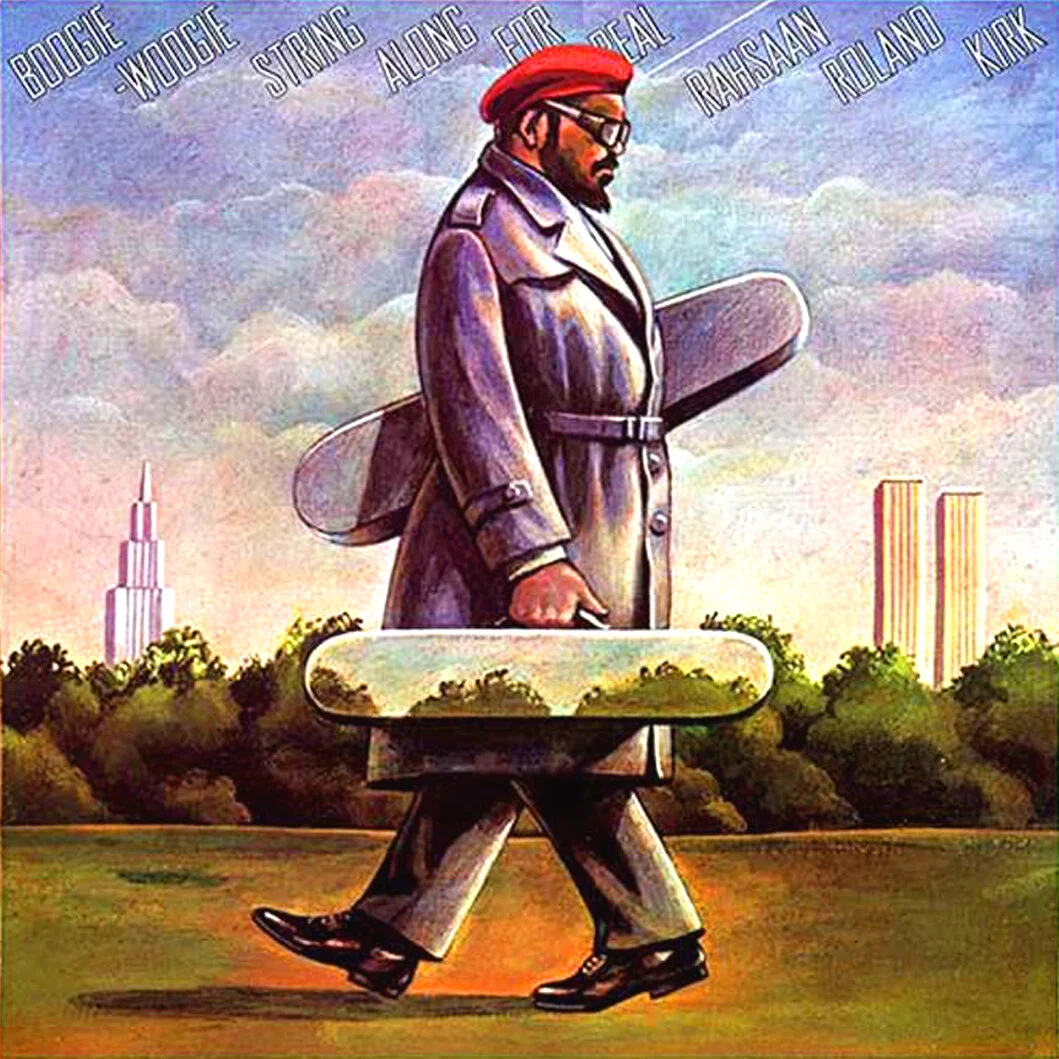Stanislaw
A Polish-American illustrator who survived a Nazi death camp as a child, Stanislaw Zagorski worked for many of the most well-known record labels from 1960–2000. From 1982–1984, I was his student. What he taught, my mind understood but my hands didn’t. His work is distinct and esoteric while, at the same time being completely accessible. Never one to simply paint a picture, his illustrations always offered a conceptual twist in an attempt to represent the product being sold or the story being told.
The illustration shown here failed miserably in its twist, but succeeded as a package. Had I not been fascinated by the cover, I would never have listened to the music. Zagorski introduced me to Rahsaan Roland Kirk.
Rahsaan
Imagine a jazz musician standing on stage with three or more wind instruments hanging from his neck — mostly saxophones. Further imagine that musician playing at least two of the instruments at one time, seemingly writing two different stories concurrently. Hemingway and Faulkner. Picasso and Warhol. Cunningham and Fonzie. At some point, it can sound like noise but, then again, so can a mantra.
I’ve never heard or seen anything like him, with the possible exception of contemporary horn player Tom Harrell. Their respective genres are unknown to me, except to categorize them as jazz.
Experimentation and improvisation
Kirk was nothing if not an innovator. Perhaps, like the painters Jean Dubuffet and Cy Twombly, he appeared to choose to discard everything but the idea of play, completely ostracizing technical mastery. That said, I know nothing of technical mastery. Perhaps I am a Philistine.
Unlike Dubuffet, Twombly and every other avant-garde painter, while performing live, Kirk was creating stories in real time, without a net. Having seen videos of some of his concerts, I have no idea whether he succeeded or failed. Every artist knows both. I suspect my desire to even ask a binary question, instead of simply listening in the moment, with eyes closed and no expectations, is a self-imposed limit on my ability to focus.
Check out his stories.
—

